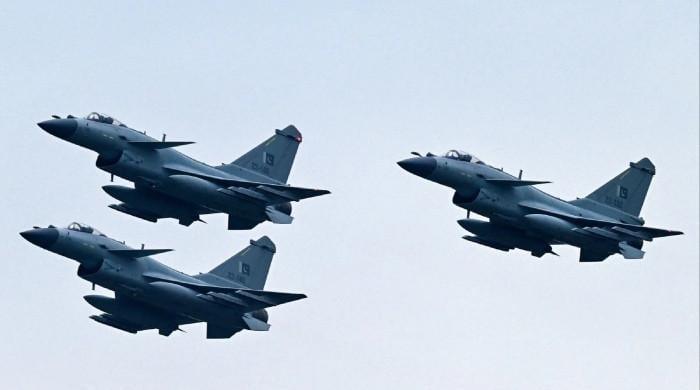Shanghai: Just over a week after a high tense fire with India, Pakistan’s Foreign Minister arrived in Beijing, the largest weapons supplier in the country.
The visit occurs when international analysts and governments alike are intensely analyzing the performance of the armament supplied by the Chinese after recent aerial commitments between Pakistan and India.
A surprising claim of four days of fighting earlier this month was Islamabad’s announcement that their aircraft supplied by the Chinese had successfully demolished six Indian airplanes, including three French -made rafale fighters.
This statement has led some observers to see the alleged victories as a powerful symbol of Beijing’s military power on the global stage.
However, experts who spoke AFP They have warned against definitive conclusions about the skill of the Chinese team based on the limited scope of recent skirmishes.
“This was a rare opportunity for the international community to evaluate Chinese military hardware on the battlefield against Western hardware (Indian),” said Lyle Morris of Asia Society Policy Institute.
While China pours hundreds of billions of dollars in defense spending every year, it is far from the United States as an exporter of weapons.
The senior researcher at Stockholm International Peace Research Institute (SIPRI), said Senior Sieman Wezeman researcher AFP That China’s drones are used in anti -terrorist operations, and their weapons have been deployed by Saudi Arabia in Yemen and against rebel forces in African countries.
“But this is the first time since the 1980s that a state has used a large number of Chinese weapons of many types in action against another state,” said Wezeman, referring to the Iran-Iraq war when they were used on both sides.
Pakistan represents about 63% of China’s weapons exports, according to Sipri. In the recent fight, Pakistan used the vigorous J10-C aircraft Dragon and JF-17 Thunder, armed with Air-Aire missiles. It was the first time that the J10-C was used in active combat, said Yun Sun of Stimson Center.
The Islamabad aerial defenses also used a Chinese kit, including the HQ-9P long-range surface missile system, and the Chinese radar deployed, as well as armed and recognition drones.
“This was the first sustained fight in which most of Pakistan’s forces used Chinese weapons and basically trusted them as their main option,” said Bilal Khan, founder of the Quwa defense analysis group with headquarters with headquarters in Toronto.
India has not officially confirmed that none of its aircraft has been lost, although a security source superior to AFP Three jets had crashed in the homeland without giving the mark or cause. Rafale Dassault manufacturer has not commented either.
The Rafale is considered one of the high-tech aircraft in Europe, while the J10-C “is not the most advanced in China,” said James Char from the Nanyang Technological University of Singapore.
But if Pakistan’s claims are true, “this should not be surprising … taking into account that the rafale is a multirrome fighter, while the J-10C was built for air combat and is also equipped with a stronger radar,” Char said.
In the days after Dogfight’s reports, the actions of J10-C Maker Chengdu Aircraft Company rose more than 40%.
“Most likely we see more orders to Chinese contractors,” said the Sun of the Stimson Center. However, “it will take time and a significant reorientation of Chinese weapons manufacturers so that the country is a large exporter of weapons,” said Jennifer Kavanagh of the defense priorities of the United States.
He pointed out that China “cannot produce certain key entries, including aircraft engines.”
Wezeman said he thought that the stock markets “reacted exaggerated”, since “we still have to see how well all the weapons used and if really means a lot.” Even if more data arise, the conflict still does not reveal much about the Chinese army’s own abilities, analysts said.
China’s own systems and weapons are much more advanced than what exports. And although having high -tech hardware is important, “much more important is how these weapons are used,” Kavanagh said.
Brian Hart from the Center for Strategic and International Studies (CSIS) said he would notice “read too much” in recent developments. “I don’t think I can make direct comparisons with how they would go to these Chinese manufacturing systems in different environments against more advanced adversaries such as the United States,” he explained.
“Since the number of data points is small and since we do not know much about the competition and training of both sides, it is difficult to draw definitive conclusions,” Kavanagh said.




